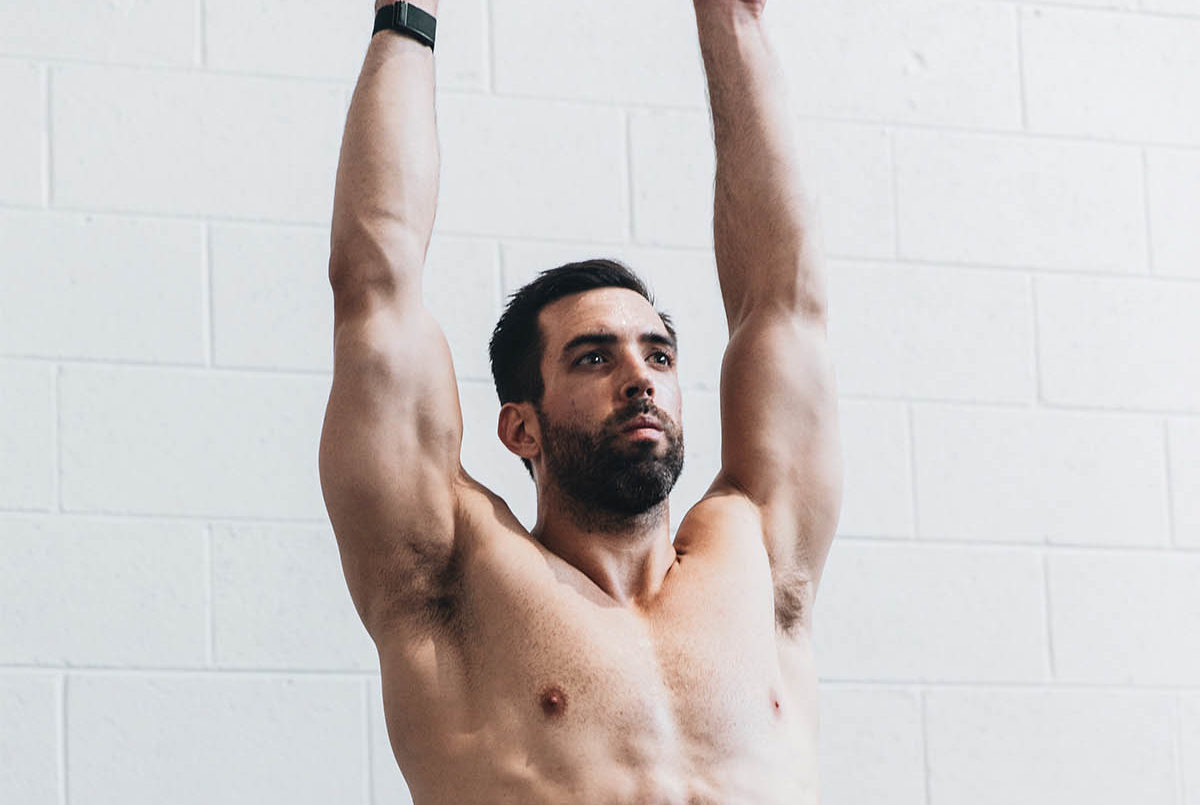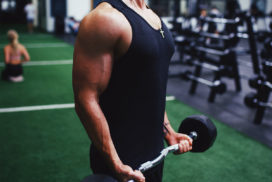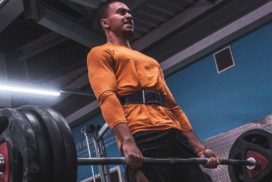Dead hangs, along with stomach vacuums and neck workouts, are less commonly done but despite being unorthodox, could benefit most people.
Dead hanging is done by holding on to a bar or branch and hanging. The two variations of dead hangs are passive hanging and active hanging. Passive hanging consists of holding on to a bar and relaxing all muscles except your core and forearms. Active hanging is done by retracting your shoulder blades and using the muscles in your back to pull you up slightly while still hanging from the bar. Passive hanging is usually the version of hanging that’s referred to when mentioning dead hangs.
Doing dead hangs every day has several benefits. These benefits result from gravity’s pull on the spine, the grip strength required to hang, and the activation of the shoulder joints and muscles.
The main benefits to doing dead hangs every day are forearm hypertrophy, increased grip strength, spinal decompression, a full upper body stretch, improved overall posture, and better shoulder health and mobility.
Forearm Growth and Grip Strength
The first benefit most people think of from dead hanging every day is added muscle to the forearm and increased grip strength.
While wrist curls might be more effective at growing the forearm, dead hangs are one of the top overall exercises for growth and have more cumulative benefits than any other forearm-specific exercises.
Dead hanging can also greatly improve grip strength which translates into being able to complete pulling exercises like the deadlift and pull-up without the need for wrist straps or longer rests between sets.
This study on the effects of different hanging methods on grip endurance found that intermittent dead hanging (hanging for 30 seconds for multiple sets) was the most effective, and increased grip endurance 11% more than maximal dead hanging (hanging with a weight until failure). Both intermittent hanging and maximal hanging resulted in increased grip endurance and strength gains and could be alternated to avoid plateauing.
Spinal Decompression
Another benefit from dead hangs is spinal decompression.
Spinal compression is caused by downward pressure on the spinal column. Some exercises like squats can lead to compression of the spine if done improperly or while already injured. Dead hanging can decompress the spine by pulling apart the vertebrae, increasing the space in between them.
Depending on your spine prior to doing dead hangs, this effect of “decompressing” the spinal column may be subtle, but for some, dead hangs can cure back pain, correct asymmetries, and even add height.
Upper Body Stretch
Adding to muscular forearms, increased grip strength, and spinal decompression, dead hangs are also great for stretching the upper body.
Stretching is one of the most neglected components of fitness and has a myriad of reasons as to why you should spend more time doing it. Consistently stretching can improve circulation, help send blood flow to muscles during training, improve recovery, reduce the risk for injury, and elevate the overall results from resistance training.
Dead hangs stretch out the lats, rear delts, and other back muscles, which over time can increase the fascia tissue surrounding the muscle, leading to better recovery from pull workouts.
Improved Posture
Another benefit of dead hanging is improved posture.
If you spend more than 6 hours sitting per day, it is likely that your spine and shoulders are being negatively affected. Dead hangs can improve your posture by decompressing your spine and increasing your shoulder’s range of motion.
When doing dead hangs, overall shoulder mobility is improved which helps you to stand taller with your chest out, as opposed to hunched over with a curved spine and shoulders rolled in. “Open” body language is better than more closed in body language so your range of motion in the shoulders is important, not just for posture, but also for your overall appearance.
Shoulder Health
Lastly, dead hanging is able to cure many shoulder problems and preserve shoulder health.
One of the first individuals in the medical field to discover the positive effects of dead hanging on shoulder health was Dr. John Kirsch. Dr. Kirsch found that by hanging from a bar, the majority of shoulder problems and pains can be cured, without the need for surgery or other extensive treatments.
In his book, Dr. Kirsch lays out the results of his study on dead hanging which found that among 92 people who had chronic shoulder pain, all of them were able to entirely cure their pain and shoulder problems from hanging. The study finished with only 90 people since 2 subjects left for their own reasons, but of those that stayed in the study, 100% were completely cured. Many of these subjects were able to avoid what would’ve been necessary shoulder surgeries by just hanging from a bar daily.
According to Dr. Kirsch, dead hands are able to cure shoulder problems and improve shoulder health by remolding the coracoacromial arch, creating more space for rotator cuff tendons and thus reducing stress on the rotator cuff as it goes through movements. Dead hangs can cure SIS (shoulder impingement syndrome), frozen shoulder, osteoarthritis, and many other shoulder cuff related injuries.
Summary
Briefly, the benefits of doing dead hangs every day are that it can help grow the forearms, increase grip strength, decompress the spine, stretch the muscles in the upper body, improve your posture, and fortify shoulder health.
For more on improving your physique, mobility, and strength, such as how to get a smaller waist as a man and how to maintain low body fat, click here.







